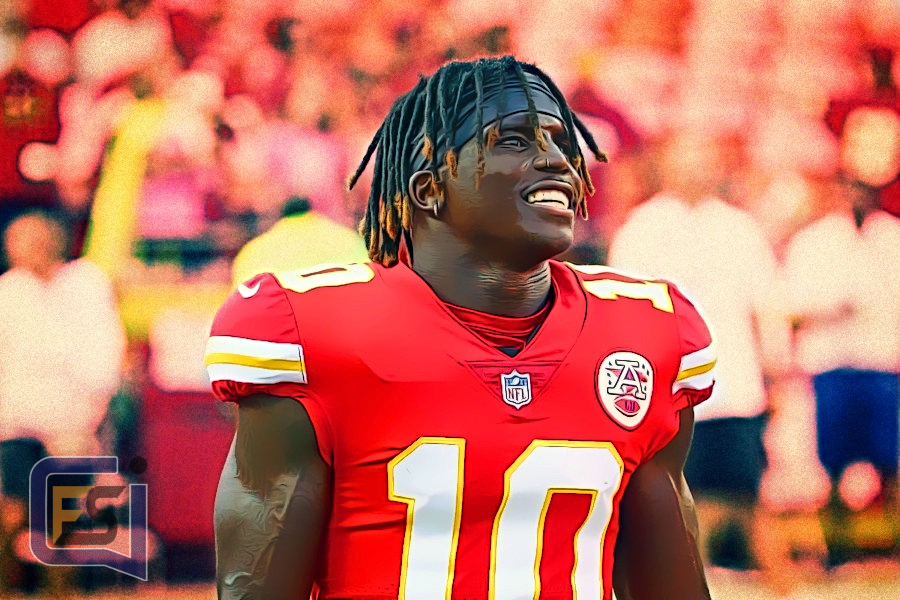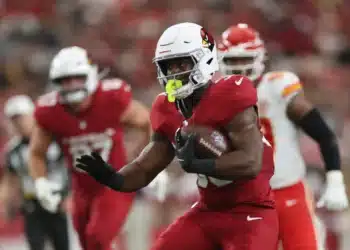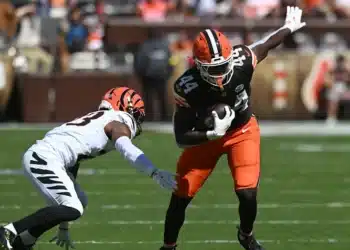Today’s article is the final installment in a three part series, which has focused on two cognitive biases that can affect our judgment in fantasy football. These are known as the Hot-Hand Fallacy and Recency Bias. If you missed the initial article (which only included data from 2016 and 2017) or need a refresher on the definitions of each, it can be reviewed here.
Part 1 of our follow-up piece examined the quarterback and running back positions from the current 2018 NFL season and can be seen here.
In both of the previous write-ups, I also discussed how we can exploit these tendencies and use them to our advantage (particularly in daily GPP contests, but could also be used with sports betting) by trying to identify players that might have recently under-performed but simultaneously have ample opportunities to score fantasy points.
Based on any patterns that emerge across all three years of data, I’ve also tried to provide some basic heuristics which might aid us in selecting players from each positional grouping. If you are unfamiliar with the term “heuristic,” it is simply a general rule or process that while not perfect, is a shortcut that can help us get consistent results most of the time.
Today in Part 2 of our Follow Up Report, we will take a look at the DraftKings pricing differences and fantasy production of wide receivers, tight ends, and defenses between Week 1 and Week 2 of the current 2018 NFL season. Just as in the last post, which focused on quarterbacks and running backs, I will actually go through each position one-by-one.
Once again, let’s get to it by starting with a look at wide receivers. (Note: All data shown in the tables below has been gathered from sources publicly available online).
WIDE RECEIVER
Table 1.1 – 2018 DRAFTKINGS POINTS AND SALARIES FROM WEEK 1 TO WEEK 2
Based on the results from 2016, 2017, and 2018, the wide receiver position is a different animal altogether. In looking at the data from all three years collectively, only a total of three players have been able to put together back-to-back Top 10 fantasy weeks. This list is not what you would expect. It includes Kelvin Benjamin in 2016, and Michael Thomas and DeSean Jackson in 2018. However, despite these three players finishing Top 10 in consecutive weeks, two of the three (Thomas and Jackson) still saw their fantasy production drop in the second week.
Alternatively, the wide receivers that scored more fantasy points from Week 1 to Week 2 were primarily those who were involved in relatively high-scoring close ball games. Last week, this list included players such as Golden Tate, JuJu Smith-Schuster, Davante Adams, and Adam Thielen. Other players like Stefon Diggs, who finished ranked at #33 in Week 1 and is not included in the table above, were also able to have huge fantasy weeks in these types of games.
When it comes to choosing wide receivers, I think we can be less price sensitive, but we should be looking for players that have three elements in their favor. These include a high game total, close point spread, and solid quarterback play. While wide receivers in lower-scoring contests can still produce solid fantasy outings (e.g. DeAndre Hopkins, T.Y. Hilton, and A.J. Green), they typically tend to be primary options on their respective teams. Second and third options in the passing game can also provide value but when selecting these players, we should also be looking for games or situations in which their quarterbacks might have 35 or more pass attempts.
TIGHT END
Table 1.2 – 2018 DRAFTKINGS POINTS AND SALARIES FROM WEEK 1 TO WEEK 2
Much like the other positions we have covered thus far, no more than three tight ends have been able to put together top-10 consecutive fantasy scores between Week 1 and Week 2 in each of the past three years. Some of the players that were able to achieve this feat in 2016 and 2017 include Zach Ertz, Delanie Walker, and Greg Olsen. In 2018, only Will Dissly, Zach Ertz, and Jesse James were able to do the same.
Although the results in the table above include names that we all know and love (Gronk, Kelce, Ertz, Reed, Kittle, and Doyle), tight ends typically come in one of two forms; blocking or pass catching. Additionally, some teams use their tight ends as Red Zone targets more frequently than others. Ideally we should be targeting pass catching tight ends with consistent roles and those who will realistically see Red Zone opportunities.
While the data shown above might make it appear that tight ends ranked 11-30 tended to perform better in Week 2, I’m not sure that the data in this table provides much of a pattern that we can use to our advantage. Many of the players in the 11-30 range had bargain basement prices but their Week 1 baseline performance was also not really worth their price tag to begin with. With a few exceptions (e.g. Rudolph, Howard, Hooper, etc.), the players in this range are typically more of the blocking variety.
One other common mistake that some people make when selecting players at this position is simply looking at how many passing yards or receptions a defense gives up as a whole. Instead, what we should be doing is targeting pass catching tight ends that are facing defenses that allow a lot of points to this particular position.
For example, last year two of the worst teams at defending tight ends were the Cleveland Browns and New York Giants. Using this information, I was able to consistently exploit these match-ups several times throughout last year. Conversely, I wouldn’t necessarily target a low-priced starting tight end against the Browns or Giants just because he was cheap (unless there was a valid reason to do so).
In summary, when making roster decisions at this position and trying to decide whether to spend up or down, I think it is important to identify the answers to three particular questions.
First, is his primary role as a blocker or will he have a significant role in his team’s passing game? Second, how involved is the player in his team’s red zone offense? And third, how good is his team’s opponent at defending the tight end position in particular? By focusing on these three variables, selecting tight ends each week doesn’t have to become a weekly exercise in futility.
DEFENSE
Table 1.3 – 2018 DRAFTKINGS POINTS AND SALARIES FROM WEEK 1 TO WEEK 2
Finally, let’s take at look at defense. Looking at the table above, all but one defense in 2018 had fewer fantasy points in Week 2 than they did in Week 1. However, in each of the past three years at least four defenses have finished top-10 in consecutive weeks. In 2016 and 2018, however, a total of five were able to hit this mark.
Although I think we all view defense as an area where we can free up some salary cap space for the rest of our rosters, I don’t think we should be targeting defenses simply because they are cheap. Sometimes, it makes more sense to spend up a little bit and try to identify defenses that have good special teams play (particularly in the return game), generates lots of QB pressures and sacks which can lead to turnovers. This is particularly true when these types of defenses go up against opponents with weak offensive lines. This year, the Bears come to mind as a team that fits this mold whereas Oakland is on the opposite end of that spectrum. Khalil Mack anyone?
Since the defense is comprised of a unit of 11 players, they are not as prone to wild scoring swings as one individual player might be. Let’s face it, a good defense is a good defense. Even though good defenses can have bad weeks (particularly if a star pass rusher or corner gets injured), if there is one position where we can let recency bias or the hot-hand influence our decision making process, it is probably defense.
CONCLUSION
With all the data above in mind, starting next week I’ll begin posting an article each week that highlights the price changes and previous week’s performance for each positional group on DraftKings. Although the focus will be on GPP tournament play, the goal will be to identify players that have recently slightly under-performed and as a result, may be under-priced or come with low ownership levels. Special emphasis will be placed on players who have the opportunity to outperform their price points. Until then, stay tuned to FlurrySports for all the best fantasy football information on the web!
Related Articles
Week 3 Fantasy Football Rankings
Week 3 NFL DFS Tournament Stacks
Hot-Hand Fallacy & Recency Bias Trends the Past 3 Years: QBs and RBs










